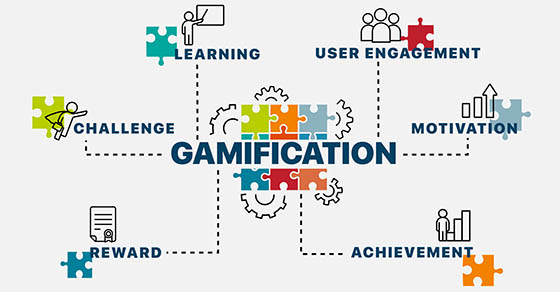
Employers spend a lot of time on motivation. You create marketing plans to, in part, motivate those you serve to support your mission — be they customers, members or some other constituency. And you likely deploy many resources to motivate employees to stay with your organization and do their best work.
It’s not easy, is it? One approach that’s taken off in recent years, especially with the widespread popularity of apps and social media, is gamification. The term generally refers to integrating characteristics of game-playing into business-related interactions or tasks.
External campaigns
Sometimes gamification is used externally. For example, a business might award customers points for purchases that they can collect and use toward discounts. Or a company might offer product- or service-related games or contests on its website to generate traffic and visitor engagement. A nonprofit could use gamification to spur members to invite others to join or to improve fundraising.
There are substantial upfront costs to consider, both in developing a gamification campaign and carrying it out. However, despite the expense, many organizations have seen some success in their efforts.
Internal benefits
For years now, various employers — including some major ones — have been using gamification internally. They’re using games to:
- Enhance their onboarding and training processes,
- Promote friendly competition and camaraderie among sales staff or other employees, and
- Measure and recognize progress toward shared strategic goals.
Creating positive experiences in these areas can improve morale and productivity. As a training tool, games tend to help employees learn more quickly and easily. Moreover, with the rise of social media, many workers are comfortable sharing with others in a competitive setting. And, from the employer’s perspective, gamification opens all kinds of data-gathering possibilities to track training initiatives and measure employee performance.
Training and leadership development
In most organizations, employee training is indeed the biggest area of focus when it comes to gamification. As many industries look to attract Generation Z — the next big demographic entering the workforce — game-based learning makes perfect sense for individuals who grew up both competing in various ways on their mobile devices and interacting on social media.
For example, safety and sensitivity training are areas that demand constant reinforcement. But it’s also common for workers to tune out these topics. Framing reminders, updates and exercises within game scenarios, in which participants might win or lose ground by following proper or improper work practices, is one way to liven up the process.
Game-style simulations can also help prepare employees for leadership roles. Online training simulations, set up as games, can test participants’ decision-making and problem-solving skills — and allow them to see the potential consequences of various actions before doing them in real-world situations.
Naturally, gamification has its risks. You don’t want to “force fun” or frustrate employees with unreasonably difficult games. Doing so could lower morale, waste time and money, and undercut training effectiveness.
Ready to launch?
If you’re unsure of how to create and launch a gamification initiative, whether internal or external, consider engaging a professional consultant. We can help you identify and assess the potential costs involved.
© 2022
Checkpoint Marketing for Firms
THOMSON REUTERS

